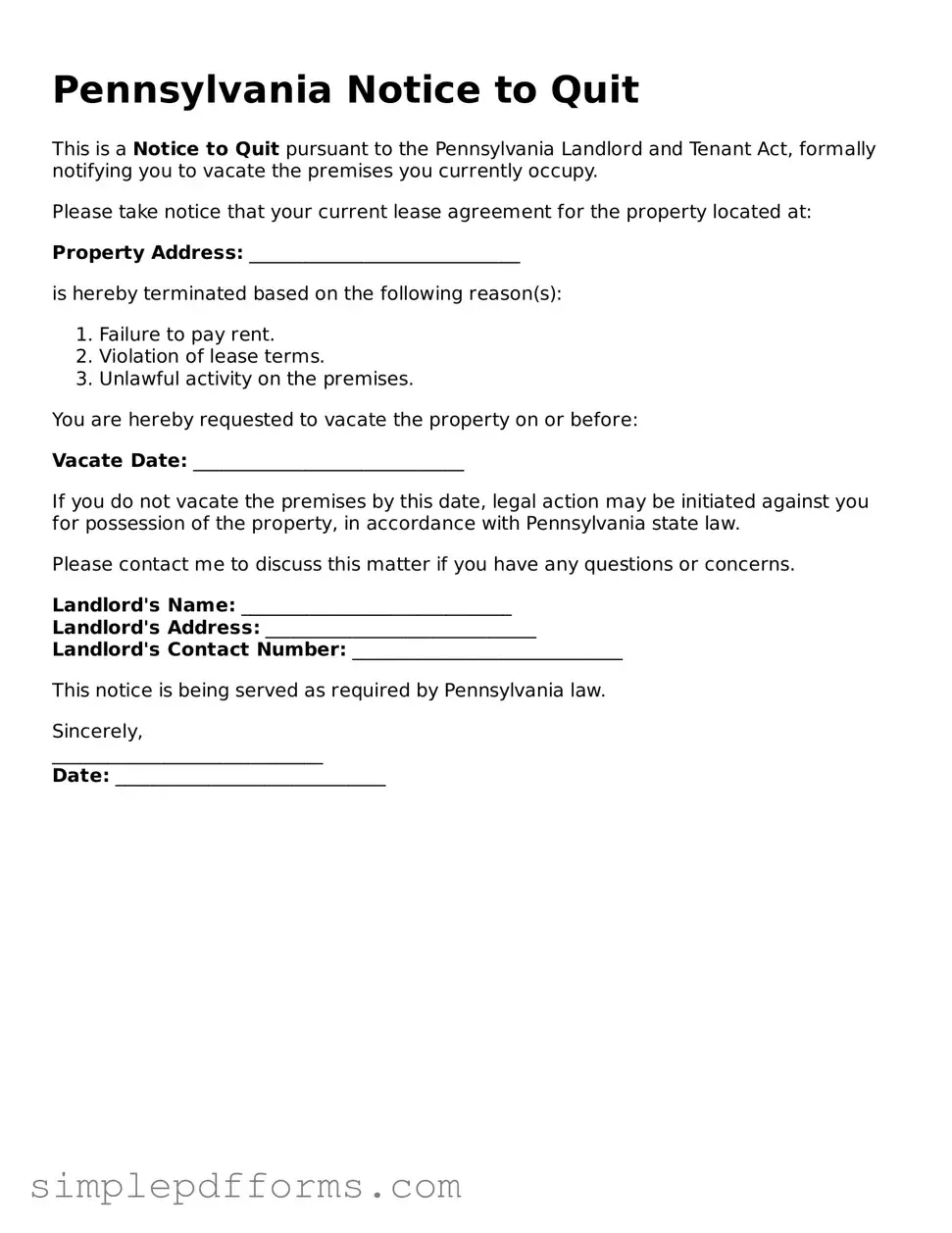Attorney-Verified Notice to Quit Document for Pennsylvania State
The Pennsylvania Notice to Quit form is a legal document that a landlord uses to inform a tenant of the need to vacate a rental property. This notice typically serves as a formal request, outlining the reasons for eviction and providing a timeline for the tenant to leave. Understanding this form is crucial for both landlords and tenants to ensure compliance with state laws and to protect their rights.
Open Notice to Quit Editor Now
